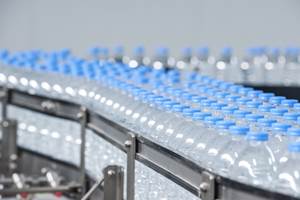
Don’t get stuck doing the wrong things at the wrong time. Software automation can help. Photo Credit: Global Shop Solutions
Great mold manufacturers strive to get better every day. Is your business stuck in any of these 10 “won’t do’s?”
- Rely on manual processes. Some of the advantages of automating your processes include reduced labor costs with BOM comparison, eliminated waste by automating inventory processes, reduced turnaround times with CAD interface and nesting interface software and improved ability to forecast industry trends.
- Use paper on the shop floor. Starting with materials management, software automation can enable you to move materials and parts through the shop faster and easier. You can produce reliable count verifications and updates, run cycle counts in real time, and make on-the-fly adjustments to part and lot-bin counts.
- Guess at job costs. With job costing accounting software you can intimately know the cost breakdown for freight, labor, overhead, outside services and material; get a time-lapse view of every part that has passed through your shop floor; view old and new quantities, current transactions and the cost for each; and review complete, up-to-date histories of finished goods costing at any time.
- Put up with sloppy inventory management. Benefits of automating your inventory process includes wireless data entry and barcode scanning, seamless integration of your material ordering system with inventory and usage, vendor material tracking to manage BOM buildup costs, up-to-date performance ratings on vendors and physical inventory counts in hours.
- Lose control of labor costs. When you automate labor costs, workers electronically log onto jobs and job sequences without leaving their work stations, eliminating manual data entry for many areas. Customizable dashboards let you analyze real-time data on the shop floor, barcoded work orders let you know what machinists are doing as they are doing it, and direct and indirect labor can be tracked with remarkable precision.
- Purchase too much or too far in advance. With automated purchasing you can buy only what you need when you need it, reduce labor costs related to purchasing, eliminate costly job/materials mismatches, easily consolidate orders to buy in quantity and get discount pricing and automatically order when parts fall below prescribed levels in inventory.
- Skimp on training. With the right process documentation and training application you can record and document all processes for auditing, certification and training, record and access libraries of training materials with one click, keep process improvement and training materials up to date while reducing the need for paper documentation and maintain all records needed to comply with quality certifications.
- Make decisions based on old data. With the right business intelligence software and KPIs, you can access real-time data on virtually every aspect of your business, create custom graphs and reports displayed in any format, review real-time management summaries and make better decisions based on financial, productivity, cost, vendor and outside services reports.
- Keep shopfloor personnel guessing. Data displays that show real-time labor, material and production data on large screens around the shop take the guesswork out of what to work on next by pulling the latest information from your enterprise resource planning (ERP). Workers can view the latest work orders, total list of jobs in process within a defined date range, priority work orders and those employees that are currently clocked in on.
- Stop getting better. Shop management software provides the tools your business needs to meet your customers’ changing demands as they happen.
Related Content
What is Scientific Maintenance? Part 2
Part two of this three-part series explains specific data that toolrooms must collect, analyze and use to truly advance to a scientific maintenance culture where you can measure real data and drive decisions.
Read MoreIndiana Mold Builder Decatur Mold Offers a History of Grit and a Future of Innovation
Decatur Mold Tool and Engineering Inc. serves as a tooling tour guide, helping busy tooling managers reduce uncertainty, lighten workload.
Read MoreWhat is Driving Mold Lifecycle Management Digitalization?
OEMs are looking to partner with suppliers to share and track data across the supply chain for advanced intervention and process management.
Read MoreHow to Select a Mold Temperature Controller
White paper shares how cooling channel analysis, which collects maximum pressure drop, total flow rate and heat dissipation, eases the performance evaluation of mold temperature controllers.
Read MoreRead Next
5 Reasons to Consider Automation
As ongoing advances enable machines and humans to get better at talking to each other, eventually more shops will become more automated. If your shop hasn’t yet looked into upping its automation game, here are five reasons why you should.
Read MoreReasons to Use Fiber Lasers for Mold Cleaning
Fiber lasers offer a simplicity, speed, control and portability, minimizing mold cleaning risks.
Read MoreAre You a Moldmaker Considering 3D Printing? Consider the 3D Printing Workshop at NPE2024
Presentations will cover 3D printing for mold tooling, material innovation, product development, bridge production and full-scale, high-volume additive manufacturing.
Read More











.png;maxWidth=300;quality=90)
_300x250 3.png;maxWidth=300;quality=90)










